
How to Use terminal block 3: Examples, Pinouts, and Specs
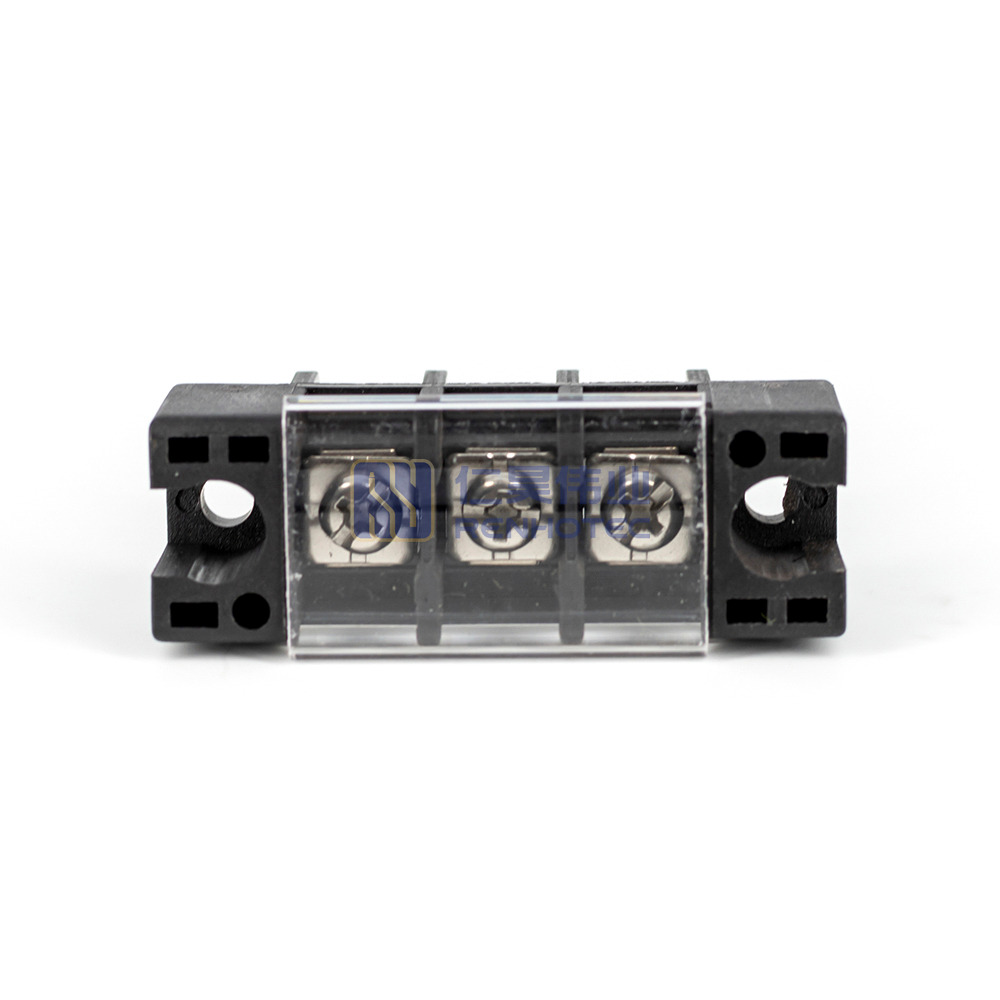
 Design with terminal block 3 in Cirkit Designer
Design with terminal block 3 in Cirkit DesignerIntroduction
A Terminal Block 3 is an electrical connector that facilitates the safe and secure connection of wires. It is commonly used in electrical systems to organize wire connections, making it easier to manage complex wiring networks. Terminal blocks are widely used in industrial controls, instrumentation panels, power supply units, and various consumer electronics.
Explore Projects Built with terminal block 3
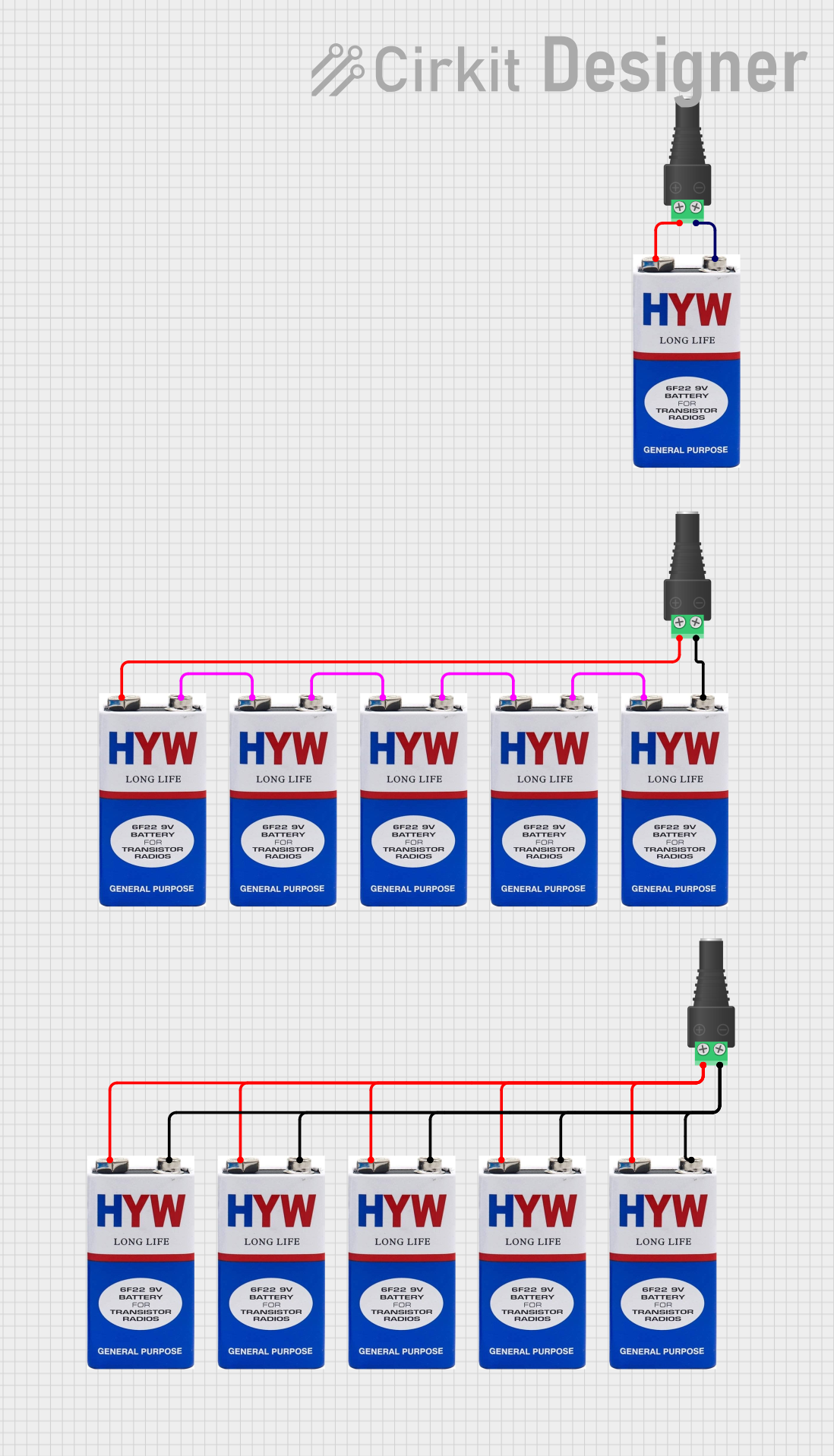
 Open Project in Cirkit Designer
Open Project in Cirkit Designer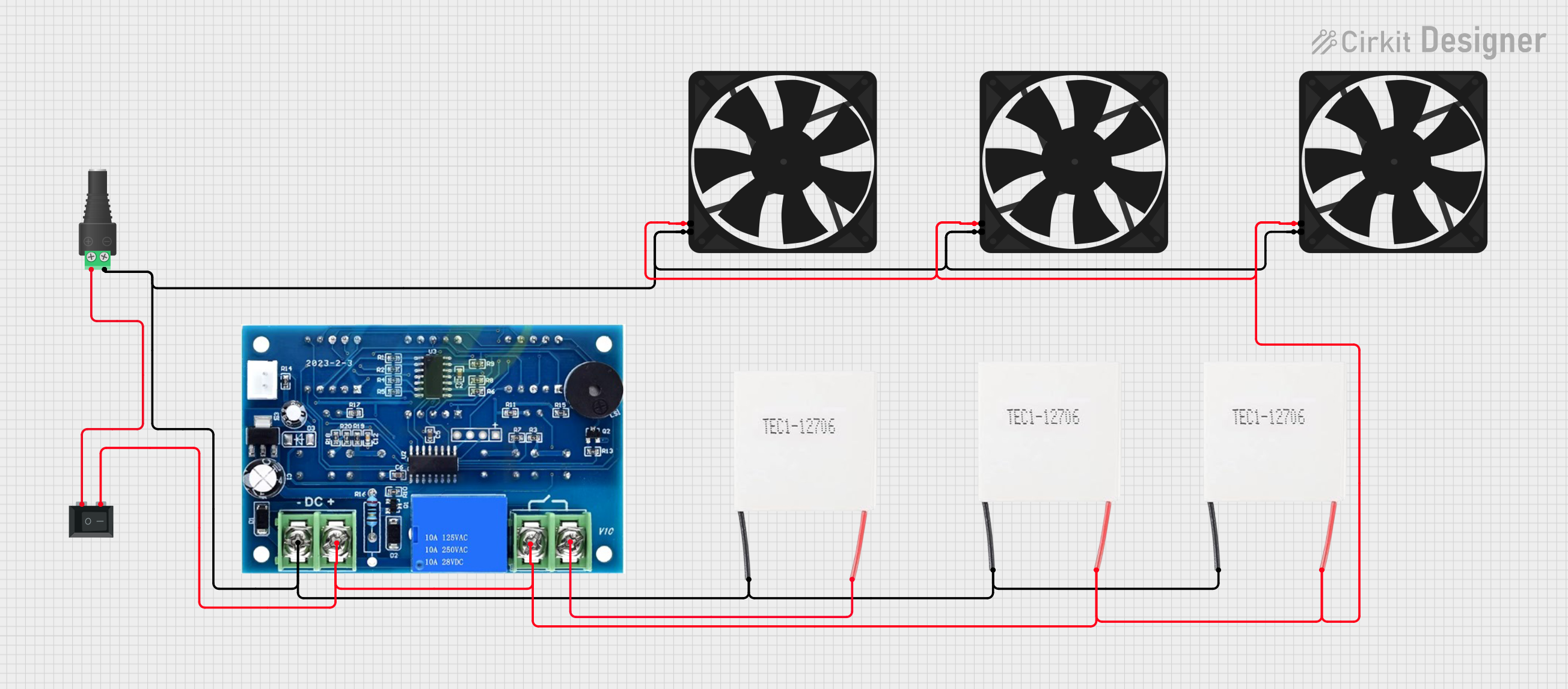
 Open Project in Cirkit Designer
Open Project in Cirkit Designer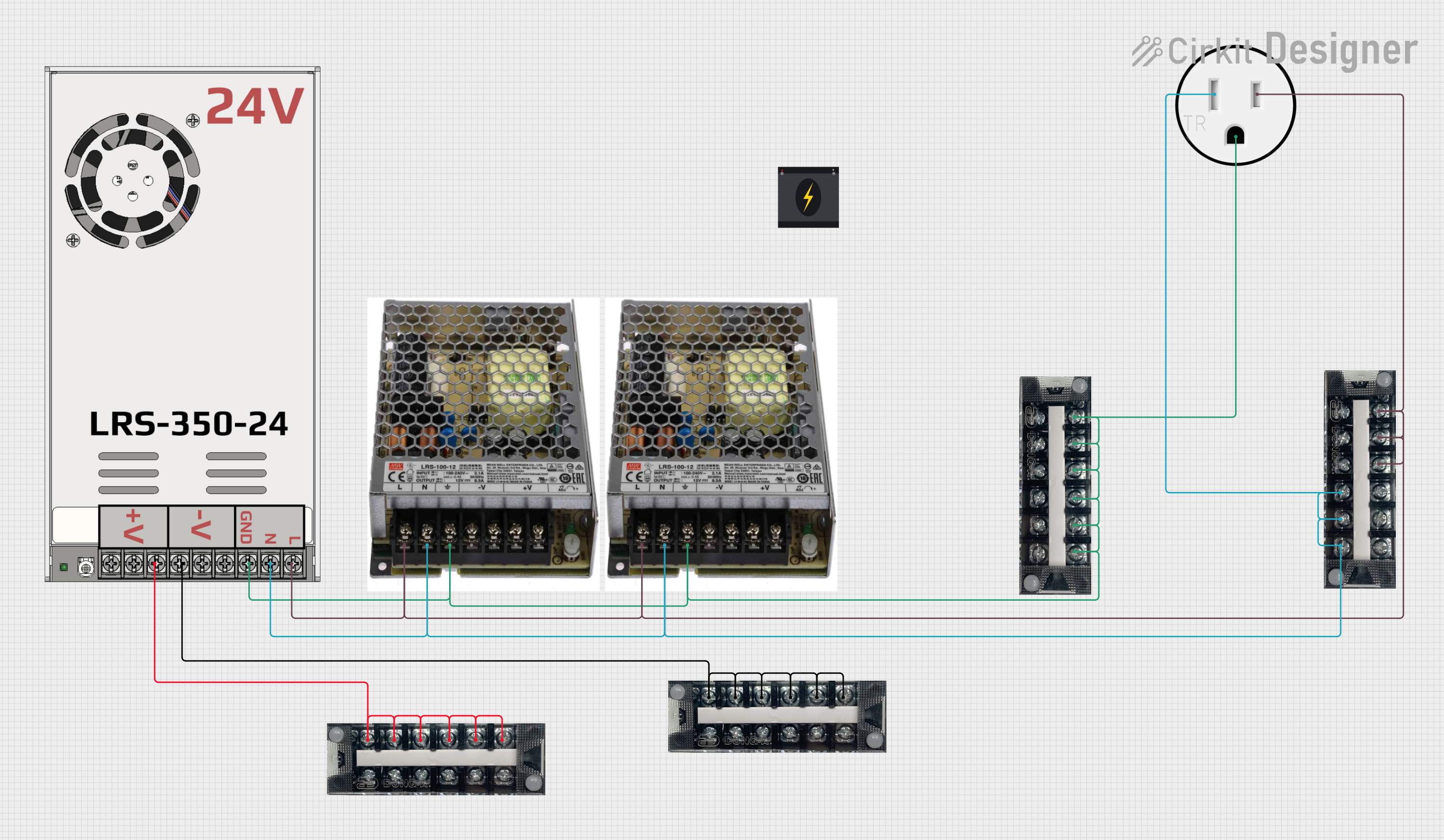
 Open Project in Cirkit Designer
Open Project in Cirkit Designer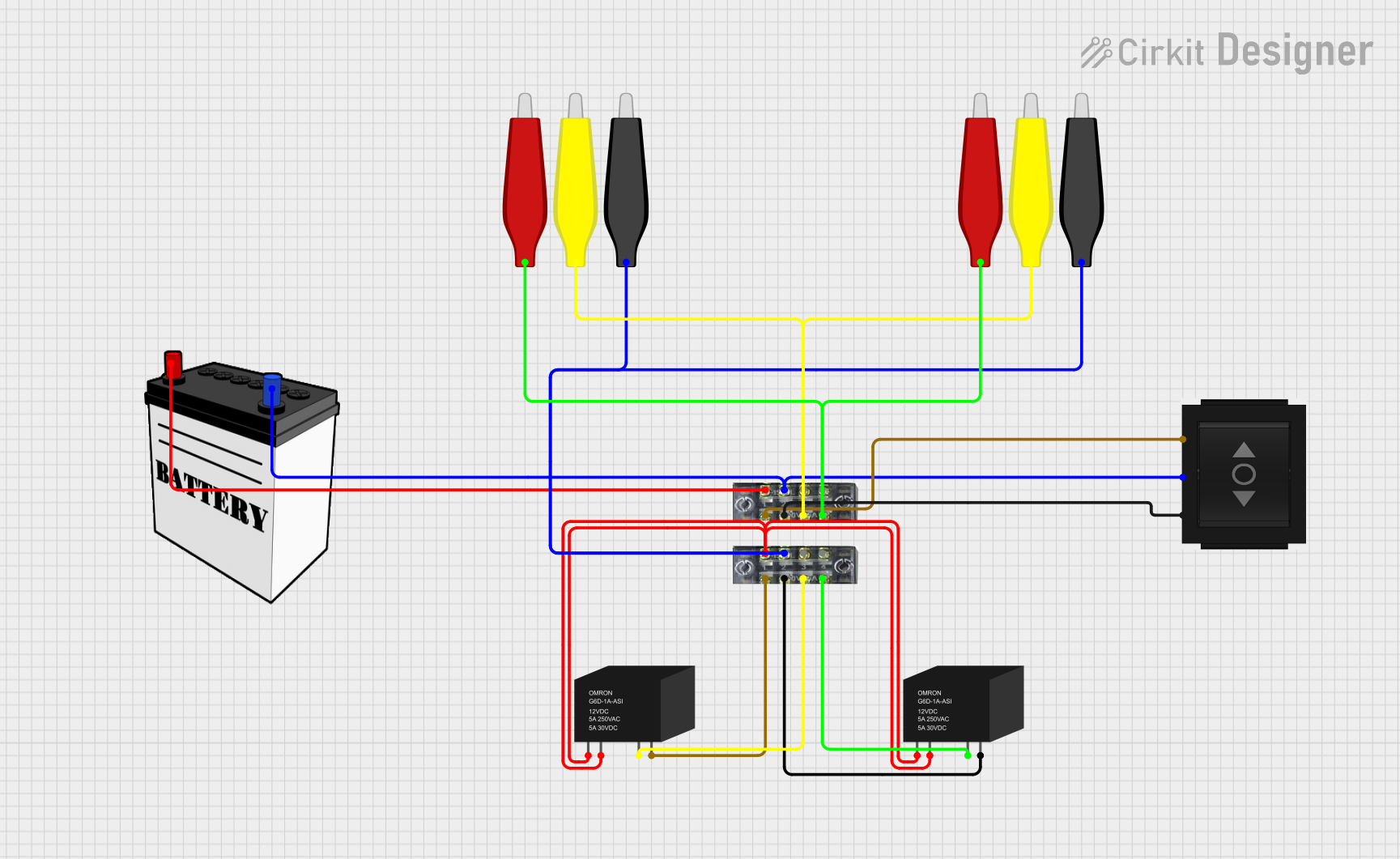
 Open Project in Cirkit Designer
Open Project in Cirkit DesignerExplore Projects Built with terminal block 3

 Open Project in Cirkit Designer
Open Project in Cirkit Designer
 Open Project in Cirkit Designer
Open Project in Cirkit Designer
 Open Project in Cirkit Designer
Open Project in Cirkit Designer
 Open Project in Cirkit Designer
Open Project in Cirkit DesignerCommon Applications and Use Cases
- Industrial control systems
- Electrical distribution panels
- Consumer electronics
- HVAC systems
- Power supply connections
Technical Specifications
Key Technical Details
- Rated Voltage: Typically up to 600V
- Rated Current: Varies, often up to 15A or more
- Wire Size: Accepts a range of wire sizes, often from 26 AWG to 10 AWG
- Material: Polyamide, thermoplastic, or metal construction for durability and heat resistance
- Temperature Range: Suitable for operating environments, often between -40°C to 105°C
Pin Configuration and Descriptions
| Pin Number | Description | Notes |
|---|---|---|
| 1 | Wire Entry | Connect stripped wire end here |
| 2 | Actuation Mechanism | Screw or lever to secure wire |
| 3 | Electrical Contact | Ensures electrical continuity |
Usage Instructions
How to Use the Component in a Circuit
- Stripping the Wire: Strip approximately 5-7mm of insulation from the wire end to expose the bare conductor.
- Inserting the Wire: Loosen the screw or lever on the terminal block, insert the stripped wire end into the wire entry point.
- Securing the Wire: Tighten the screw or lever to clamp the wire securely in place. Ensure the wire is held firmly to maintain a good electrical connection.
- Connecting Multiple Wires: If daisy-chaining or connecting multiple wires, repeat the process for each wire, ensuring each is securely connected.
Important Considerations and Best Practices
- Wire Gauge Compatibility: Ensure the wire gauge is compatible with the terminal block's specifications.
- Torque Specifications: Apply the correct torque to the screws to prevent damage and ensure a secure connection.
- Regular Inspection: Periodically check the connections for any signs of corrosion, overheating, or loosening.
- Proper Labeling: Label each connection point to facilitate easy identification and troubleshooting.
Troubleshooting and FAQs
Common Issues Users Might Face
- Loose Connections: Wires may become loose over time due to vibration or thermal expansion. Regularly check and retighten the connections as necessary.
- Corrosion: In harsh environments, terminals may corrode, leading to poor connections. Use appropriate protective measures, such as corrosion-resistant materials or coatings.
- Overheating: Ensure the current rating is not exceeded to prevent overheating of the terminal block.
Solutions and Tips for Troubleshooting
- Intermittent Connections: If experiencing intermittent connections, check for loose wires or damaged terminals and secure or replace as needed.
- Difficulty Inserting Wire: If the wire does not insert easily, ensure it is properly stripped and straightened before insertion.
FAQs
Q: Can I use any wire gauge with the Terminal Block 3? A: No, you must use a wire gauge that is within the terminal block's specified range.
Q: How do I know if my connection is secure? A: A secure connection will not allow the wire to be pulled out easily and there should be no visible gaps between the wire and terminal.
Q: Can I reuse a terminal block? A: Yes, terminal blocks are designed to be reusable. However, inspect for any signs of wear or damage before reuse.
Example Code for Arduino UNO Connection
// Example code to demonstrate how to connect an LED to an Arduino UNO
// using a Terminal Block 3 for the ground connection.
void setup() {
pinMode(13, OUTPUT); // Set the LED pin as an output
}
void loop() {
digitalWrite(13, HIGH); // Turn on the LED
delay(1000); // Wait for 1 second
digitalWrite(13, LOW); // Turn off the LED
delay(1000); // Wait for 1 second
}
// Note: Connect the anode of the LED to pin 13 of the Arduino UNO.
// Connect the cathode to one side of the Terminal Block 3.
// Connect a wire from the other side of the Terminal Block 3 to the GND pin on the Arduino UNO.
Remember to ensure that the LED's current and voltage requirements are compatible with the Arduino UNO's output specifications, and always use a current-limiting resistor to protect the LED.